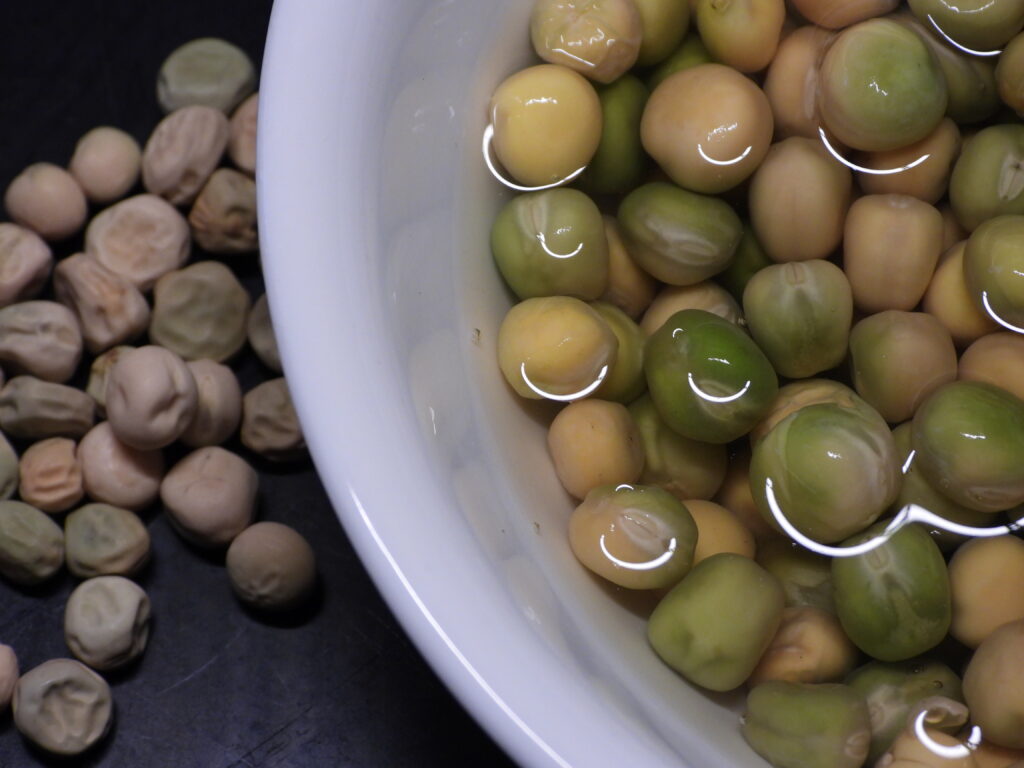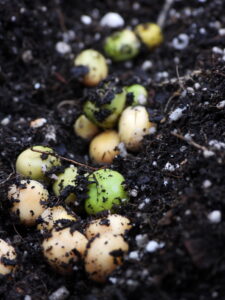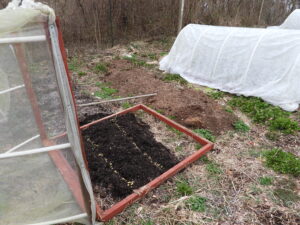

Peas don’t like heat, so it’s a good idea to plant them as early as possible. But if you plant too early, you’ll end up with only a couple of survivors spread across a large trellis, wasting precious garden space. What’s the solution?
Early-planted peas can do well, but you need to stack the deck for success. First, soak your pea seeds inside for at least four hours, during which time they’ll plump up and wake up. You can actually keep them inside until they sprout, but you’ll want to pour off the water after twelve hours or so and cover the seeds with a humidity dome if you go that route. Sprouted peas also need to be handled more carefully to prevent the tender new roots from breaking, so I usually just do the four-hour-plumping-up soak.
Next, out in the garden, ignore the instructions that pea seeds should be spaced one to three inches apart. Instead, drop them into a furrow in dense clumps before covering them up.
 (Of course, it goes without saying that you waited until the soil was at least 35 degrees Fahrenheit, planned for rain to keep the seedlings growing fast, and didn’t plant just before an extended cold snap.)
(Of course, it goes without saying that you waited until the soil was at least 35 degrees Fahrenheit, planned for rain to keep the seedlings growing fast, and didn’t plant just before an extended cold snap.)
Finally, find some way to protect your pea seedlings from critters. The same sprouts that are delicious on our table are also a favorite of rabbits and other garden invaders. We use caterpillar tunnels over our spring pea beds, keeping the enclosure in place until the plants are tall enough to need a trellis.
After all that, it’s time to wait and hope. Fingers crossed for a copious, early crop!